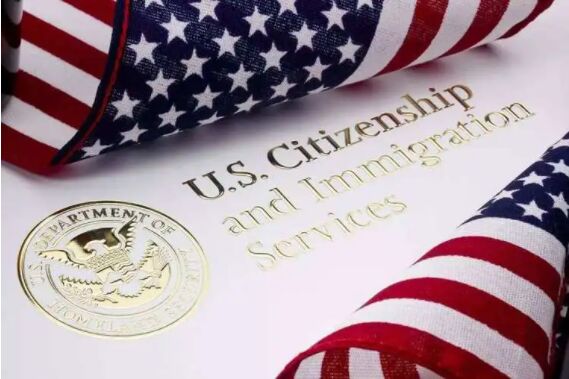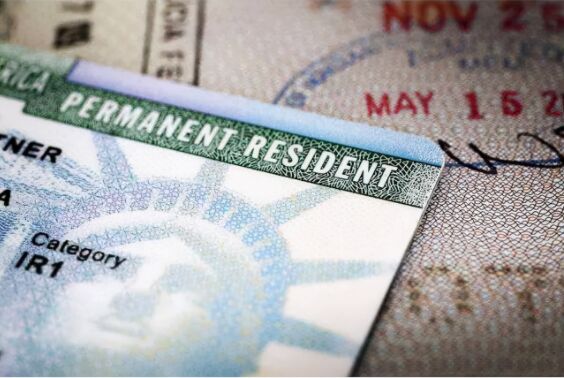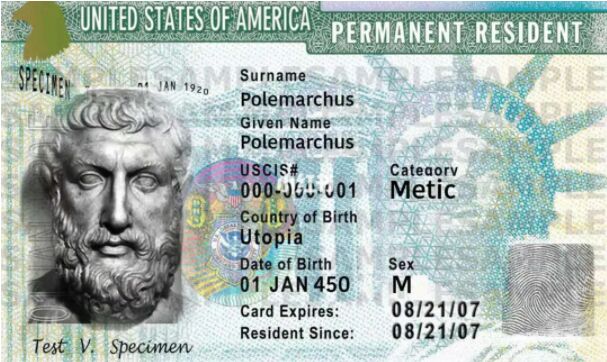您好,欢迎光临EasyGo易游国际,我们提供全球【签证办理】【移民绿卡】【机票预订】【公证认证】【法律支援】【商标注册】等各国出入境服务

THE OFFICIAL PARTNER
HOT LINE
19896549345
中文 / English
If you want to successfully apply for a marriage green card in the United States, how can you avoid triggering the "90-day rule"?
This article, to send you a sincere and practical dry goods: the "90-day rule" that all applicants for marriage green cards in the United States need to abide.
U.S. citizens and U.S. green card holders can apply for U.S. green cards for their spouses. For people born in mainland China, there is currently no scheduling for these two types of applications. The application procedures in the United States are the same: they can submit both I-130 relatives immigration applications and applications for I-485 identity conversion. After approval, they will receive a two-year temporary green card and can apply for replacement with a permanent green card before the expiration of two years.

If the marriage green card applicant and beneficiary are both in the United States
Only need to submit the application materials to the Immigration Bureau. If the Combo card combining EAD work card and travel documents is submitted at the same time, the beneficiary can work legally in the United States and freely enter and leave the United States without restriction after a few months of application, and can receive the green card after several months of interview and approval.
If the marriage green card beneficiary is outside the United States
The application will be more complicated than a person's presence in the country. In addition to dealing with the Immigration Bureau, the application will be transferred to the NVC National Visa Center and the U.S. Embassy and Consulate in the country where the beneficiary is located. Only after the immigration visa is obtained through the interview of the U.S. Embassy and Consulate, the beneficiary can enter the United States, and the green card will be sent home after the beneficiary enters the country.
Such applications will take longer than people in the country. Coupled with the impact of the epidemic in recent years, a large number of applications face the problem of backlog and long waiting.
If you are not married, there is also a special fiance/wife K-1 visa available in the United States.
K-1 visa, Nonimmigrant Visa for a Fianc(é)e, is a type of visa specially provided for foreign fiancées/wives living outside the United States to marry their American fiancées/wives.
The applicant must be a U.S. citizen and the green card holder cannot apply. The K-1 visa is temporary. Only when the marriage is completed within 90 days after entry can the beneficiary apply for a marriage green card in the United States for status adjustment. K-1 visas are generally valid for 6 months, but there is only one chance of entry. If the marriage cannot be completed within 90 days, this temporary visa will expire and the non-American fiancee/husband will be deported.
The shortcomings of K-1 visa are obvious. Only U.S. citizens can apply. In addition, the application cycle is relatively long. Many people either cannot apply at all or are unwilling to wait for too long application time. Therefore, many fiancées and fiancés outside the United States will choose to enter the United States with other identities before obtaining a license to get married and start the application process of marriage green cards in the United States.

For applicants who do not want to wait abroad, or who already need to convert their "single intent" non-immigrant visa status from B- 2, F-1, J-1, M-1, TN, etc. into a green card in the United States, they need to pay attention to the "90-day principle" when preparing to submit their green card applications ".
When receiving the green card application, the Immigration Bureau will follow the "90-day rule 90-day rule" to determine whether the beneficiary of the marriage green card, that is, the U.S. citizen or the foreign spouse of the green card, gave the real reason when applying for entry into the United States.
Work visas such as H-1B and L-1, although they are also non-immigrant visas, have the characteristics of "dual intent" and are not restricted by the 90-day principle.
For example, B- 2 is a tourist visit visa. If a B- 2 applies for a marriage green card within 90 days after entering the country, the Immigration Bureau will suspect that the B- 2 concealed his original intention of going to the United States when he applied for a B- 2 visa. He may have come to the United States for marriage instead of traveling. He lied about the reason for going to the United States.
Another example is a F-1. If he starts to apply for a marriage green card within 90 days after entering the country, the Immigration Bureau will think that this F-1 has violated the original intention of studying in the United States and has no intention to leave the United States when his F-1 status expires.
If an application violates the "90-day principle" and meets a very serious immigration staff, the most serious result includes not only the rejection of the application, but also the cancellation of the original valid visa.
Of course, in most cases, these questions from the Immigration Bureau have the opportunity to explain. An application for a marriage green card will not be directly rejected because it violates the "90-day principle.

If the applicant can reasonably prove that the reason provided for the visa to the United States is true, then there is no problem. The difficulty is that this sentence is so perverse that it is even more difficult to provide reasonable proof materials.
Unless this change occurs under circumstances beyond the control of the applicant, such as when a foreign spouse visits his spouse in the United States, the physical condition of the American spouse needs to stay in the United States for a long time to take care of the other party, which makes it easier to provide proof.
To deal with the "90-day principle" honestly and skillfully, the green card may be approved smoothly in the end, but the process will be very difficult. Therefore, if you want not to create obstacles on the way to apply for your green card, bypassing the "90-day principle" is the best choice.
It should be noted that the 90-day rule is also applicable to entry registration for marriage and green card application.
So when should such an important 90 days be calculated?
Usually, we can check our I-94 records to find the date of your last entry into the United States, add 90 days to this date, and then start the marriage green card application after bypassing the 90 days.
The "90-day principle" has repeated investigations, which is also something that everyone needs to pay special attention to when applying. For example, if you first use B- 2 to enter the country and leave after 90 days, and then use B- 2 to enter the country after a period of time, then a new 90-day inspection will be reopened. Or you used a H-1 visa to enter the country before, H-1B you don't need to be inspected by the "90-day principle", but then you have to follow the "90-day principle" H-1B your identity becomes invalid and switch to B- 2 to enter the United States ".
For applicants from countries where the marriage green card is not scheduled, they usually submit both the I-130 relative immigration qualification application and the I-485 domestic identity conversion application. Theoretically, the submission I-130 will not trigger the 90-day original review, but the submission of I-130 and I-485 separately is relatively rare.
Relative Services
菲律宾
Philippines
VIP Price: ¥62000/人起
菲律宾
Philippines
VIP Price: ¥537500/人起
土耳其
Turkey
VIP Price: ¥1380000/人起
瓦努阿图
Vanuatu
VIP Price: ¥1020000/人起
VIP Price: ¥1000/人起
VIP Price: ¥0/人起
Popular Services
Recommend
Hot
List of holidays in Indonesia in 2023 1
Assault! Multi-sector joint raid in the Philippines! Detain the Chinese, 255 of them! 3
Sudden! 6 Chinese kidnapped by 5 in Philippines...... 4
"Chinese businessman frightened by kidnapping"? Philippine police concealed "kidnapping case"? 5
Philippines 2024 statutory holidays and special holidays (with salary algorithm) 7
Do Japanese visa holders travel to the Philippines visa-free? 8

出入境顾问 在线咨询

在线客服

在线客服
联系方式:19896549345,您可以电话或者微信直接沟通。

加我好友,随时为您解答出入境问题



